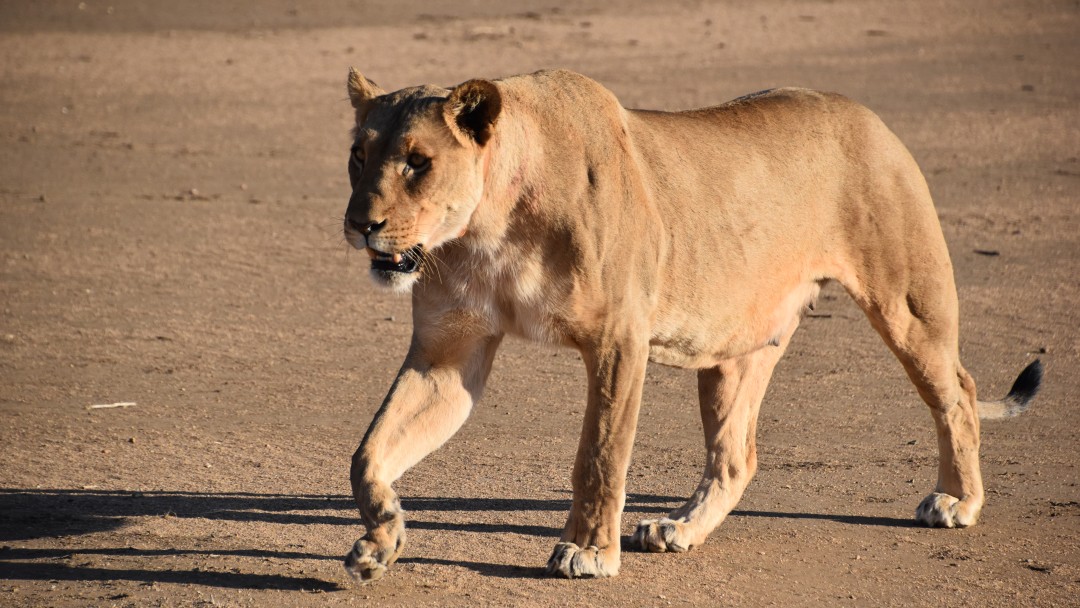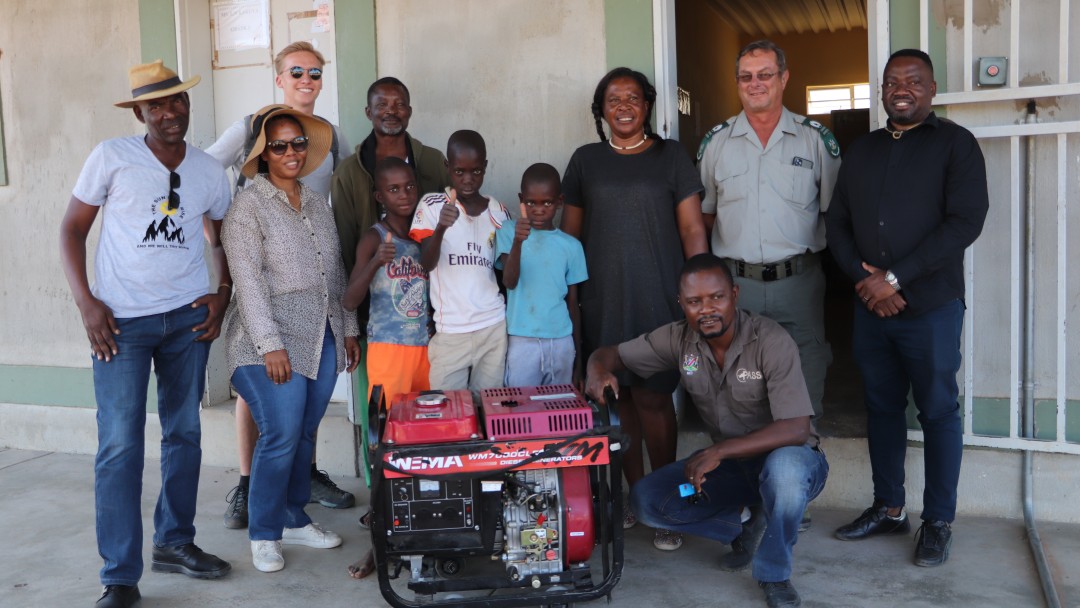
Namibia is home to a wide variety of wild animals – from the “big five” of Africa to various species of birds and insects. More than two thirds of the population depend on biodiversity for their livelihoods. To preserve these natural resources, KfW is contributing to the Community Conservation Fund of Namibia (CCFN) on behalf of the German Federal Government. The CCFN helps local communities to preserve the protected areas around them.
“I try to convince our entire village to look after natural resources,” says gamekeeper Hiamaundu Hinu, who is committed to the Orupa conservancy. “They should learn how important it is to protect nature.” This is because Namibia also faces a wide range of threats: agriculture is spreading at the expense of wilderness, the growing population needs more resources and conflicts between people and wildlife are increasing.
Namibia already has done a lot to preserve its unique biodiversity. Close to 17% of the country’s land area is under state protection, and a further 21.5% is protected at municipal level. These are numerous smaller areas looked after by the people in the local region. When put together, these are not insignificant in size. At the end of 2020, there were 86 communal conservancies covering an area of 166,000 square kilometres, plus close to 14,000 square kilometres in 43 community forests. The communal conservancies therefore play a key role in preserving Namibia’s natural biodiversity and environment.
However, the majority of these areas have not yet been able to generate enough revenue to perform their function in the long-term. In addition, due to travel restrictions during the COVID-19 pandemic, there were virtually no cash flows through tourism. The CCFN, which was established in 2017, is intended to remedy this situation and secure long-term financing for the protected areas. On behalf of the German Federal Ministry for Economic Cooperation and Development (BMZ), KfW is supporting the CCFN with the project “Poverty-oriented support for community-based nature conservation in Namibia” and COVID-19 emergency aid to reduce the environmental and social impact of the pandemic on the communal conservancies.
“We are part of nature, it is important to us because it gives us the resources that sustain us, and that’s why we should take good care of it,” explains Tania Fisch, who works as Deputy Treasurer in the administration of the Khob !Naub conservancy.
The CCFN provides a grant for her salary and for other expenditure of the conservancy. It consists of an endowment fund for running costs and an expense fund that covers important investments in the communal conservancies. KfW is supporting the CCFN with a total investment of EUR 19 million in the expense fund.

The fund’s financial resources are used for three purposes. Firstly, non-governmental organisations receive funds to help communities with their commitment to the protected areas; secondly, expenditure is used to prevent conflicts between people and wildlife; and thirdly, local residents receive financial rewards if they protect wildlife and its habitat.
“Our patrols are helping. Poachers never know where we are at the any given time, but they constantly see our tracks and withdraw because they are not sure whether we are nearby or not,” explains gamekeeper Pineas Kasaona from Anabeb. The value of wildlife is directly felt by the employees of the conservancies and the people in the neighbouring villages. The endowment fund’s resources are intended to cover the minimum requirements of the 86 communal conservancies in Namibia.
Manager Allan Silubanga from Sobbe is proud: “My work makes an important difference to me, because now I can support my family.” Compared internationally, the communal conservancies are very successful. They not only strengthen nature, but also the communities themselves. The first signs of success are visible. The number of wild animals has increased significantly in recent years. The livelihoods of over 7,000 people are secured. In addition to investments already made by WWF and other donors, KfW’s promotion will contribute to acquiring further funds from the private sector. The aim is to secure the long-term financial sustainability of the communal conservancies and community forests.
Learn more about the Community Conservation Fund of Namibia (CCFN)
Share page
To share the content of this page with your network, click on one of the icons below.
Note on data protection: When you share content, your personal data is transferred to the selected network.
Data protection
Alternatively, you can also copy the short link: kfw-entwicklungsbank.de/s/enzBY4eX
Copy link Link copied